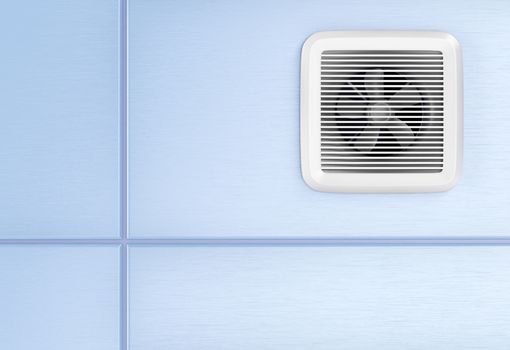Dissecting the topic of damp and mould in rented property
Disrepair claims relating to damp and mould can really put a dampener on a landlord-tenant relationship.
Damp and mould can cause serious damage to the property and potentially adjoining properties, if not treated appropriately and the cause resolved. It can also be embarrassing and frustrating for tenants, and it has the potential to cause serious health issues. Unfortunately, damp and mould in rented property is something that many landlords and tenants, will be confronted with at some stage.
Landlord’s Responsibility
Private and local authority landlords’ have a legal responsibility to ensure that the property they let to tenants is safe and fit for human habitation. The Landlord and Tenant Act 1985 states at section 11 that the landlord is responsible for keeping the structure and exterior of the property (including drains, gutters and external pipes) and the installations for the supply of water, in repair. It is worth noting that some types of damp can therefore be a landlord’s responsibility to resolve, if it is caused by issues with the exterior of the property (such as loose tiles letting in rain) or installations for supply of water (for instance leaky pipes). Damp can go on to form mould which can then cause issues with the structure of the property, too, which would be a concern for landlords seeking to protect their investments.
The Homes (Fitness for Human Habitation) Act 2018 amended the Landlord and Tenant Act 1985 – it did not impose new obligations on landlords, but it required landlords to ensure their properties are fit for human habitation at the start and throughout the tenancy. Although ‘fit for human habitation’ is not defined, consideration is given to the factors in the Housing Health and Safety Rating System which includes repair, ventilation, and freedom from damp, among other things.
Causes
Damp and subsequently mould is caused by excess moisture. Damp can be separated into three categories:
– Rising damp
Rising damp is the result of water from the ground entering a property by travelling up through the brickwork. This is usually caused by issues with the structure of the property.
– Penetrating damp
Penetrating damp occurs when water comes in to the property from an external wall, for instance when bricks have deteriorated to the point where they allow water ingress.
– Condensation
Condensation is caused by a combination of excess moisture in the air and poor ventilation or airflow in a property. Condensation occurs when steam accumulates to form damp for instance from showers or cooking.
Tenant’s Responsibility
With rising and penetrating damp, a tenant must report damage or need for a repair to the landlord promptly. If the tenant fails to notify the landlord of repairs required, this may prevent a landlord from complying with their obligations to carry out such repairs, which could then become part of a landlord’s defence, if said tenant were to subsequently bring a disrepair claim or a claim under the Homes (Fitness for Human Habitation) Act. The landlord would not be responsible for what they did not know about and could not have known about. That said, if a landlord were to notice an issue with rising or penetrating damp and or mould whilst in attendance at the property, the landlord should take the initiative to carry out works to rectify the problem, as from that point the landlord would have knowledge of the issue, and should therefore take steps to rectify any disrepair.
A tenant will then also need to allow access to the landlord or landlord’s agents so that an inspection or repair work can be carried out. Where access is not granted, a landlord is arguably prevented from carrying out its duties and responsibilities in respect of repair. If the matter were to escalate and a disrepair issue was brought before the court, the landlord could refer to their attempts to carry out repairs and the tenant’s refusal to allow access in their defence and potential counterclaim, and ask the court to consider whether the tenant had therefore failed to mitigate their own loss – by neglecting to allow access and potentially allowing the problem to worsen.
Taking Action
When acting for landlords, one of the most common reports received from tenants is that they are experiencing damp and or mould in their rented properties. Often, this is caused by a build-up of condensation, rather than rising or penetrating damp. Condensation can be successfully managed by the tenant finding the right balance between warmth and ventilation at the property, to keep moisture levels down and prevent mould from growing.
- keeping windows open when cooking and showering
- using extractor fans, and
- avoiding drying clothes over radiators or inside
In summary
Developments in legislation have strengthened tenants’ means of redress in circumstances where landlords do not fulfil their obligations. This has led to an increase in speculative disrepair claims from solicitors acting for tenants on a ‘no win no fee’ basis, which can be costly and time-consuming for landlord’s to have to deal with. Therefore, acting promptly and effective complaint handling is preferable to disrepair claims.
Tenants and landlords should seek to have an open and clear dialogue around any issues with the property, so that such issues can be dealt with quickly and with as little inconvenience as possible to either party – even if the matter does develop into a full disrepair claim, as the pre-action protocol on housing conditions encourages the use of alternative dispute resolution.
When giving comment and advice on a non-specific basis, Boyes Turner cannot assume legal responsibility for the accuracy of any particular statement. In the case of specific problems it is recommended that professional advice be sought.
About Boyes Turner
Boyes Turner are a regional UK law firm with an impressive international reach. The expertise of their teams is considerable, spanning the corporate world, technology and private clients. Jazmin Perry is a solicitor working in the firm’s Property Disputes team. She advises on property disputes including landlord and tenant matters, boundary issues, adverse possession and contested leasehold enfranchisement claims. (jperry@boyesturner.com)
* * *



